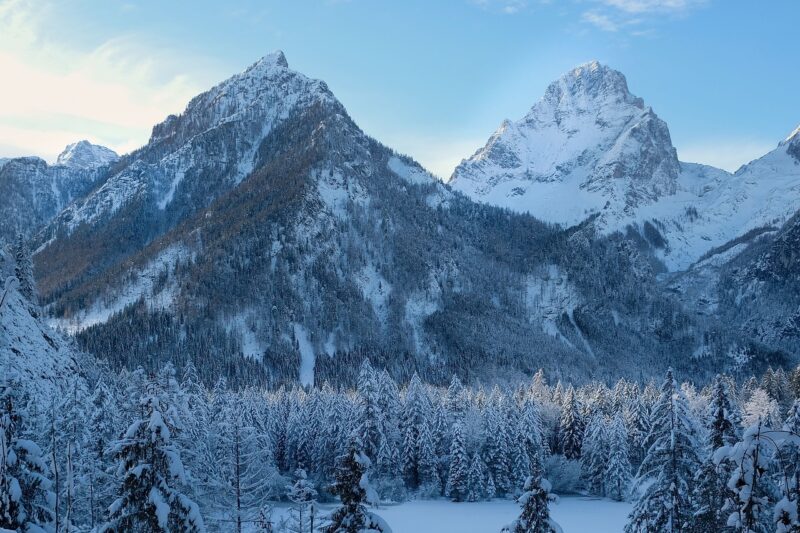Theories Behind the Mysterious Disappearances in the Dyatlov Pass Incident
November 12, 2024

The Dyatlov Pass incident is one of the most chilling unsolved mysteries in the realm of exploration and outdoor adventure. In 1959, a group of experienced hikers set out on an expedition in the Ural Mountains of Russia, only to meet with a series of bizarre and lethal events that left everyone puzzled for decades. Today, we delve into the chilling details of the Dyatlov Pass incident, exploring various theories that attempt to explain the mysterious disappearances of these intrepid hikers.
1. What Happened at Dyatlov Pass?
To understand the mystery, we first need to recount the tragic events that took place in February 1959. A group of nine hikers, led by Igor Dyatlov, embarked on a trek to reach Otorten Mountain. After failing to return, search parties were dispatched and eventually discovered the group’s abandoned tent on February 26, 1959. Strikingly, the tent was found to have been ripped open from the inside, and the group had fled into the harsh winter conditions, some with inadequate clothing and footwear.
As the search progressed, rescue teams located the bodies of the hikers distributed across the snowy landscape, but several exhibited bizarre injuries: some had severe internal damage, as if they had faced blunt force trauma, yet there were no external wounds. Other remains were found with missing eyes, tongues, and even some inexplicable radiation. This led to an array of theories trying to make sense of what had transpired that day.
2. The Theories Surrounding the Dyatlov Pass Incident
Over the years, several theories have emerged that attempt to explain the strange occurrences of that fateful night:
- Avalanche Theory: The most accepted natural explanation is that the hikers experienced an avalanche, causing them to panic and flee their tent in a rush to escape. However, skeptics argue that the area did not show clear signs of an avalanche, and the tent was located on a ridge where it would have been highly unlikely for an avalanche to occur without triggering further signs of disturbance.
- Military Testing Theory: Some theorists posit that the region could have been a testing ground for military exercises, with accidental involvement from the hikers. Reports of military parachute flare activities occurring around the same time fuel this theory, as does the discovery of radiation on some clothing items. However, many historians point out that there is no substantial evidence to directly link military activity to the event.
- Paranormal Phenomena: Mentioned in popular culture, some speculate that the hikers fell victim to supernatural forces, including a Yeti-like creature or extraterrestrial involvement. These theories often circulate in the world of folklore, but lack credible evidence. Nonetheless, their continued popularity highlights the human fascination with the unknown.
- Infrasound Theory: Some researchers suggest that infrasound, a low-frequency sound below the range of human hearing, can cause panic and disorientation. If this theory holds any merit, the abnormal wind patterns in the area could have generated such sound waves, leading to the group’s irrational behavior as they fled their tent in fear. Although compelling, the theory requires further exploration to establish its validity.
- Hypothermia and Panic Theory: Proponents of this theory suggest that fearing imminent death from hypothermia, the hikers succumbed to hallucinations and irrational behavior, resulting in their frantic escape from the tent. This psychological angle provides insight into their actions but still leaves many unanswered questions about their injuries and strange findings.
Each of these theories presents intriguing possibilities while also raising concerns about the overwhelming amount of unanswered questions that remain surrounding the incident.
3. The Aftermath and Continued Interest
In the decades following the incident, interest in the Dyatlov Pass event has only grown. Documentaries, books, essays, and countless YouTube videos have recounted the events and the theories posed. Furthermore, the lack of explicit conclusions has led to a thriving community of amateur sleuths dedicated to uncovering the truth behind the tragedy. It has even inspired fictional adaptations, including movies and series that delve into the enigma of the mysterious hikers.
Modern technology has also allowed for renewed investigations into the incident. Advances in forensic science and technology give researchers the opportunity to reevaluate evidence and explore questions that were previously beyond reach. As recently as 2020, the Russian authorities reopened the investigation, more than half a century later, to evaluate possible new evidence and theories.
Conclusion: A Lasting Mystery
The Dyatlov Pass incident remains one of the major mysteries of the 20th century, continuing to intrigue and horrify those seeking the truth. Despite exhaustive investigations, the chilling unanswered questions keep the case alive—what genuinely happened to the Dyatlov group that fateful night in February 1959? Each new theory sparks debate, but no conclusion can fully encompass the tragedy faced by these brave explorers.
As we ponder the possibilities, the allure of the unknown only grows in our collective consciousness, leaving us with the haunting thought—some mysteries may be better left unsolved.
Every year, new theories surface, and new generations are captivated by this tale of tragedy and uncertainty. What remains is a haunting reminder about the fragility of life and the mysterious force of nature, continuing to beckon adventurers into the wilderness where uncertainties lie behind every snow-laden hill.








